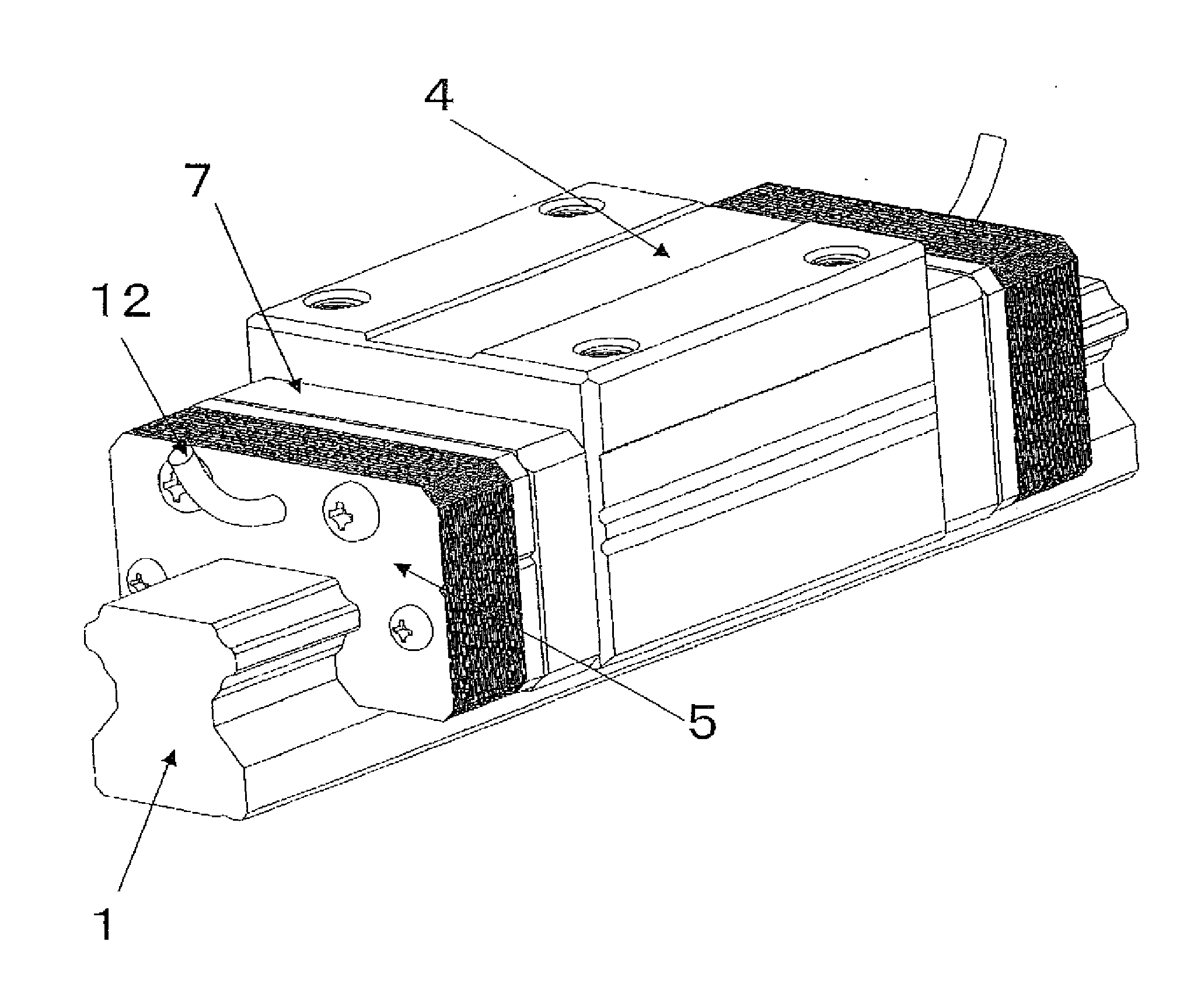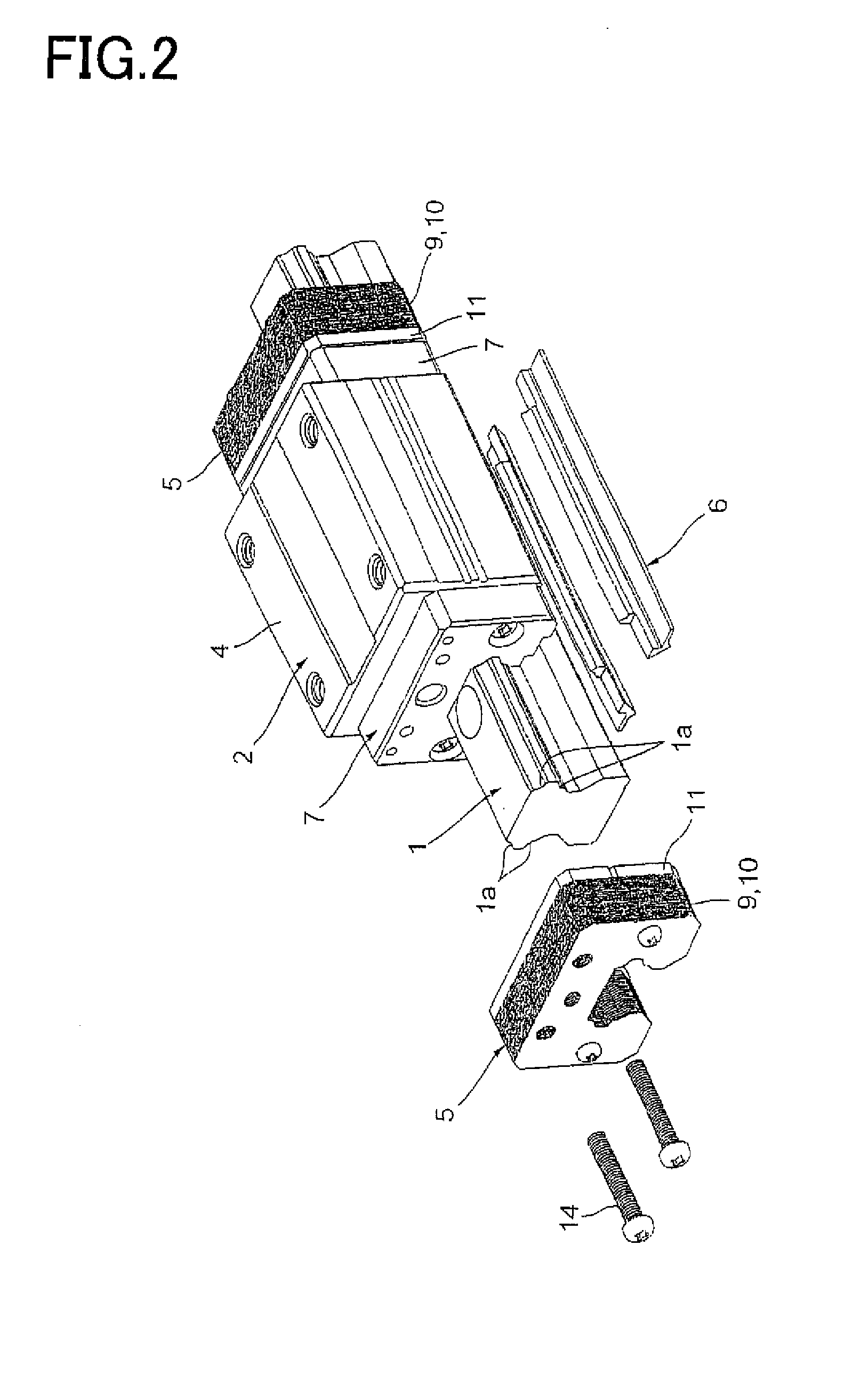Motion guide device, table apparatus, and damping method for motion guide device
a technology of motion guide device and table apparatus, which is applied in the direction of bearings, shafts and bearings, bearings, etc., can solve the problems of difficult damped, vibration may occur, and causes, and achieve the effect of reducing braking force, smooth damping of vibration, and increasing braking for
- Summary
- Abstract
- Description
- Claims
- Application Information
AI Technical Summary
Benefits of technology
Problems solved by technology
Method used
Image
Examples
embodiment
[0107]The following “numeral 1” formula indicates how to calculate the viscosity resistance of oil. FIG. 22 shows a model of parameters employed by this calculation formula.
v(1 / s)=V(m / s)h(m)τ(Pa)=F(N)A(m2)η(Pa·s)=τ(Pa)v(1 / s)ɛ(mm2 / s)=η(Pa·s)103ρ(g / cm3),accordingly,F(N)=η(Pa·s)·A(m2)·V(m / s)h(m)=ɛ(mm2 / s)·ρ(g / cm3)·A(m2)·V(m / s)·103h(m),[Numeral1]
where γ is a shear rate, V is a speed, h is a height, τ is a shear strain, F is a viscosity resistance, A is a contact area, η is a viscosity, ε is a kinetic viscosity, and ρ is a density.
[0108]One of the parameters having an influence on the viscosity resistance F is the speed V. The faster the movement speed of the moving member 2, the larger the viscosity resistance F. The height h is the height of a layer of oil, that is, the width of the gap 16 between each end damping member 5 and the raceway rail 1. The narrower the gap 16, the larger the viscosity resistance F. In addition, the larger the contact area A, the larger the viscosity resistanc...
PUM
 Login to View More
Login to View More Abstract
Description
Claims
Application Information
 Login to View More
Login to View More - R&D
- Intellectual Property
- Life Sciences
- Materials
- Tech Scout
- Unparalleled Data Quality
- Higher Quality Content
- 60% Fewer Hallucinations
Browse by: Latest US Patents, China's latest patents, Technical Efficacy Thesaurus, Application Domain, Technology Topic, Popular Technical Reports.
© 2025 PatSnap. All rights reserved.Legal|Privacy policy|Modern Slavery Act Transparency Statement|Sitemap|About US| Contact US: help@patsnap.com



